Abstract
The genetic information for this work came from a very large collection of gene frequencies for "classical" (non-DNA) polymorphisms of the world aborigines. The data were grouped in 42 populations studied for 120 alleles. The reconstruction of human evolutionary history thus generated was checked with statistical techniques such as "boot-strapping". It changes some earlier conclusions and is in agreement with more recent ones, including published and unpublished DNA-marker results. The first split in the phylogenetic tree separates Africans from non-Africans, and the second separates two major clusters, one corresponding to Caucasoids, East Asians, Arctic populations, and American natives, and the other to Southeast Asians (mainland and insular), Pacific islanders, and New Guineans and Australians. Average genetic distances between the most important clusters are proportional to archaeological separation times. Linguistic families correspond to groups of populations with very few, easily understood overlaps, and their origin can be given a time frame. Linguistic superfamilies show remarkable correspondence with the two major clusters, indicating considerable parallelism between genetic and linguistic evolution. The latest step in language development may have been an important factor determining the rapid expansion that followed the appearance of modern humans and the demise of Neanderthals.
Full text
PDF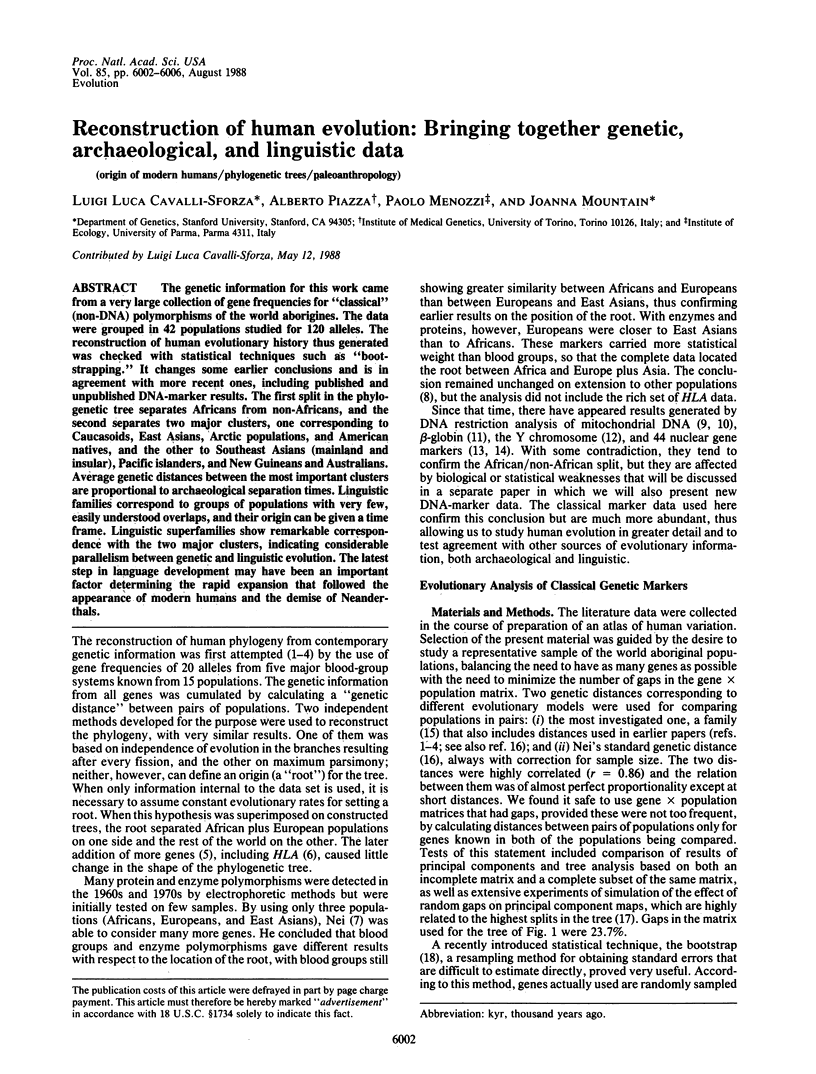
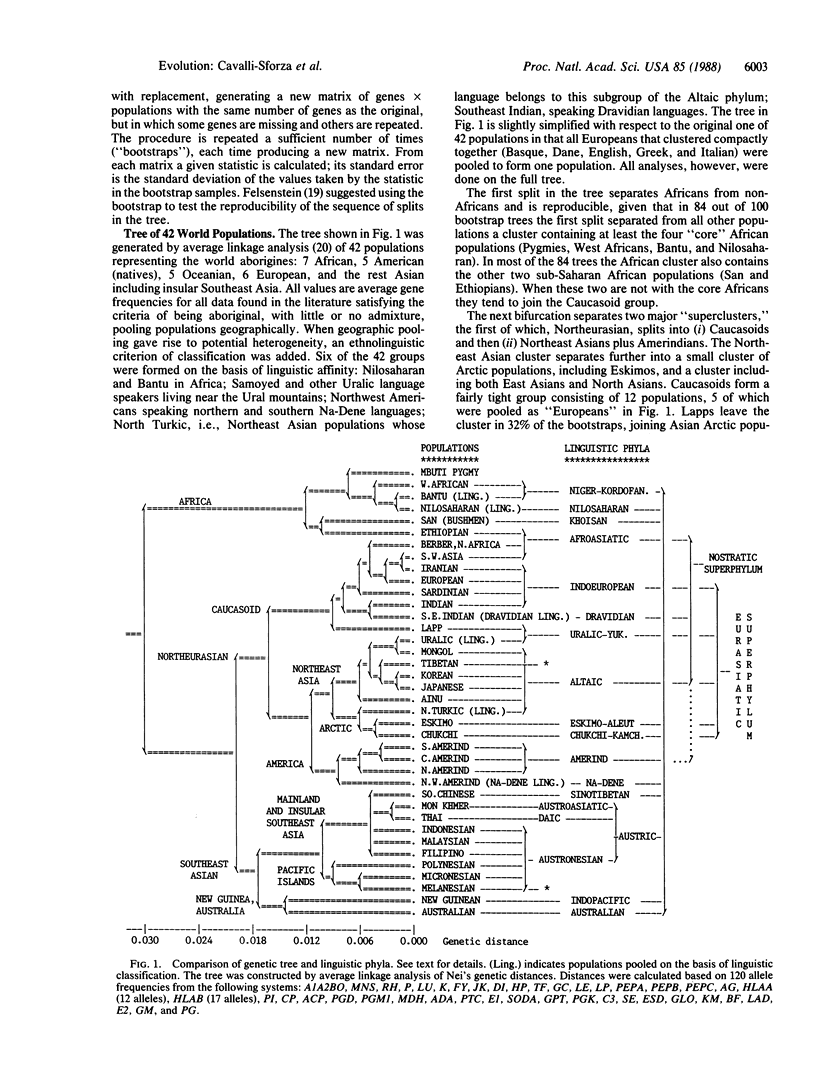
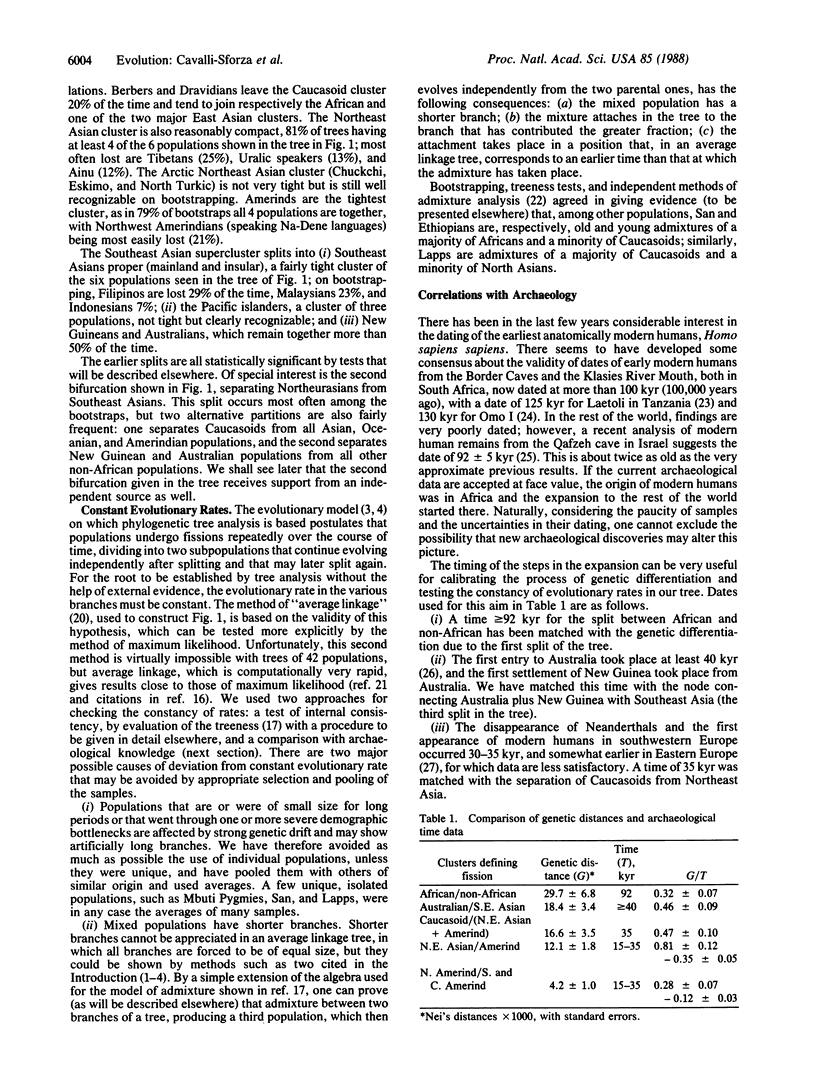
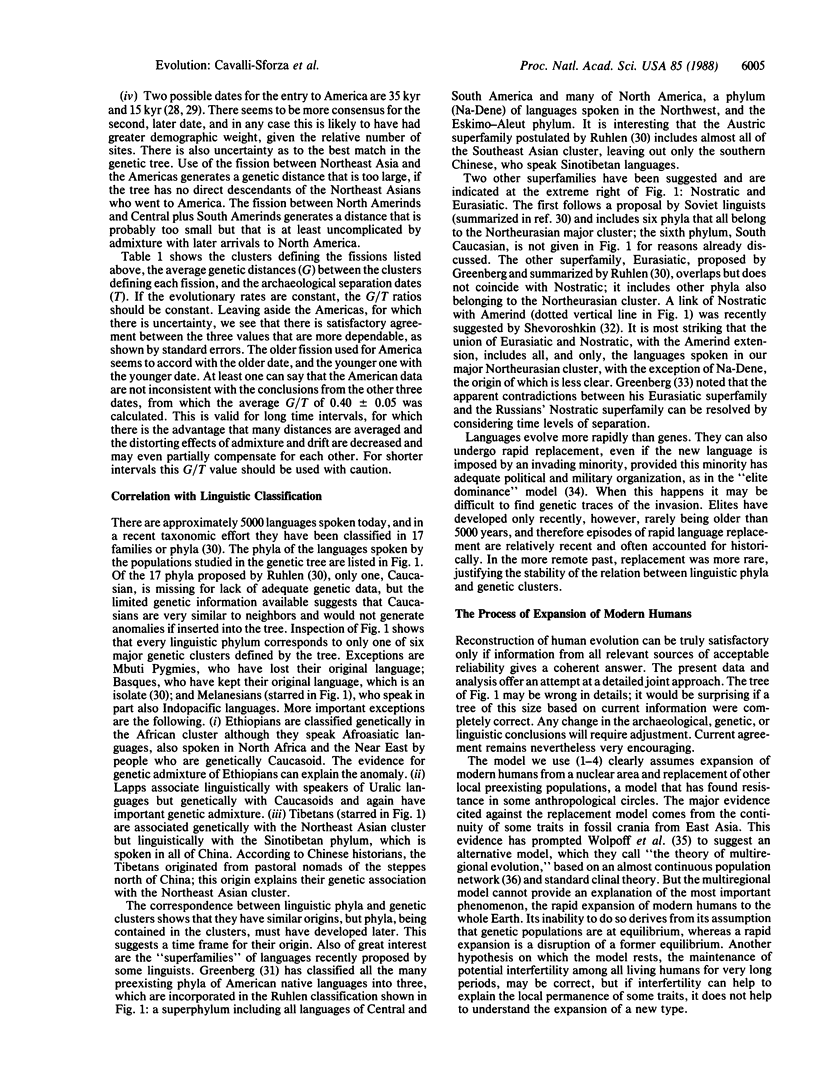
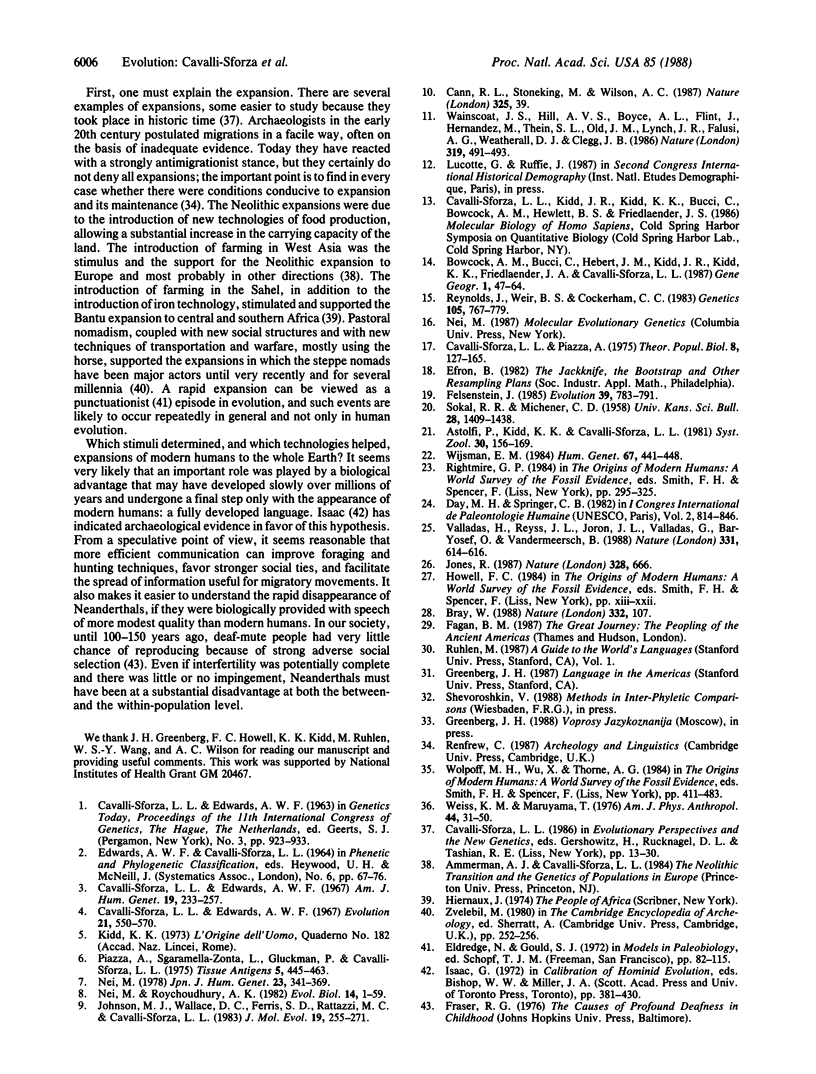
Selected References
These references are in PubMed. This may not be the complete list of references from this article.
- Bowcock A. M., Bucci C., Hebert J. M., Kidd J. R., Kidd K. K., Friedlaender J. S., Cavalli-Sforza L. L. Study of 47 DNA markers in five populations from four continents. Gene Geogr. 1987 Apr;1(1):47–64. [PubMed] [Google Scholar]
- Cavalli-Sforza L. L., Edwards A. W. Phylogenetic analysis. Models and estimation procedures. Am J Hum Genet. 1967 May;19(3 Pt 1):233–257. [PMC free article] [PubMed] [Google Scholar]
- Cavalli-Sforza L. L., Piazza A. Analysis of evolution: evolutionary rates, independence and treeness. Theor Popul Biol. 1975 Oct;8(2):127–165. doi: 10.1016/0040-5809(75)90029-5. [DOI] [PubMed] [Google Scholar]
- Johnson M. J., Wallace D. C., Ferris S. D., Rattazzi M. C., Cavalli-Sforza L. L. Radiation of human mitochondria DNA types analyzed by restriction endonuclease cleavage patterns. J Mol Evol. 1983;19(3-4):255–271. doi: 10.1007/BF02099973. [DOI] [PubMed] [Google Scholar]
- Nei M. The theory of genetic distance and evolution of human races. Jinrui Idengaku Zasshi. 1978 Dec;23(4):341–369. doi: 10.1007/BF01908190. [DOI] [PubMed] [Google Scholar]
- Piazza A., Sgaramella-Zonta L., Gluckman P., Cavalli-Sforza L. L. The Fifth Histocompatibility Workshop gene frequency data: a phylogenetic analysis. Tissue Antigens. 1975 Jun;5(5):445–463. doi: 10.1111/j.1399-0039.1975.tb01489.x. [DOI] [PubMed] [Google Scholar]
- Reynolds J., Weir B. S., Cockerham C. C. Estimation of the coancestry coefficient: basis for a short-term genetic distance. Genetics. 1983 Nov;105(3):767–779. doi: 10.1093/genetics/105.3.767. [DOI] [PMC free article] [PubMed] [Google Scholar]
- Wainscoat J. S., Hill A. V., Boyce A. L., Flint J., Hernandez M., Thein S. L., Old J. M., Lynch J. R., Falusi A. G., Weatherall D. J. Evolutionary relationships of human populations from an analysis of nuclear DNA polymorphisms. Nature. 1986 Feb 6;319(6053):491–493. doi: 10.1038/319491a0. [DOI] [PubMed] [Google Scholar]
- Weiss K. M., Maruyama T. Archeology, population genetics and studies of human racial ancestry. Am J Phys Anthropol. 1976 Jan;44(1):31–49. doi: 10.1002/ajpa.1330440106. [DOI] [PubMed] [Google Scholar]
- Wijsman E. M. Techniques for estimating genetic admixture and applications to the problem of the origin of the Icelanders and the Ashkenazi Jews. Hum Genet. 1984;67(4):441–448. doi: 10.1007/BF00291407. [DOI] [PubMed] [Google Scholar]


